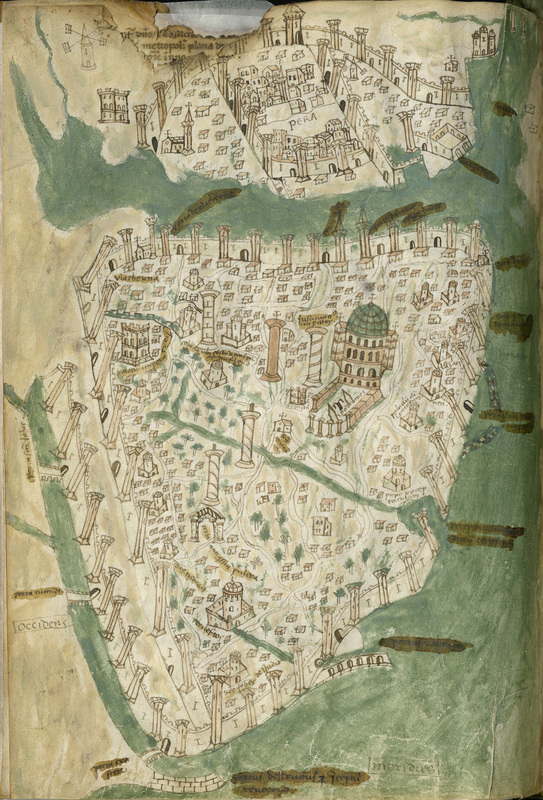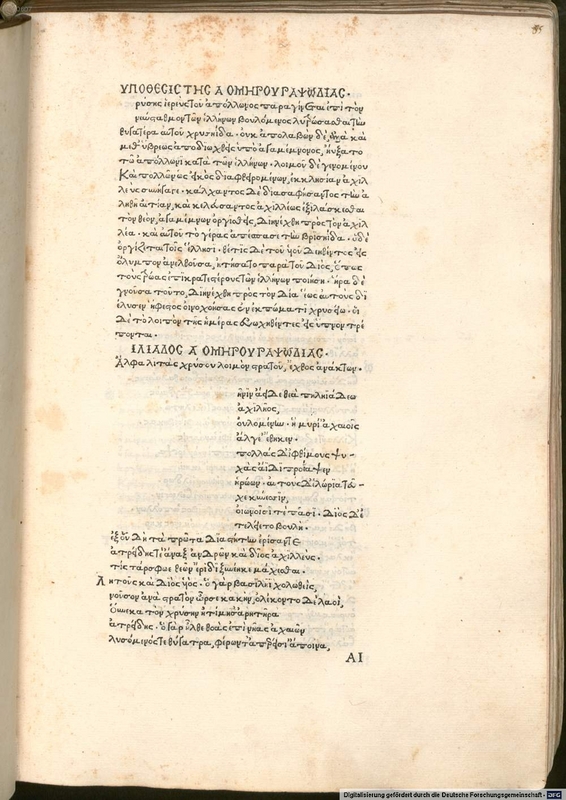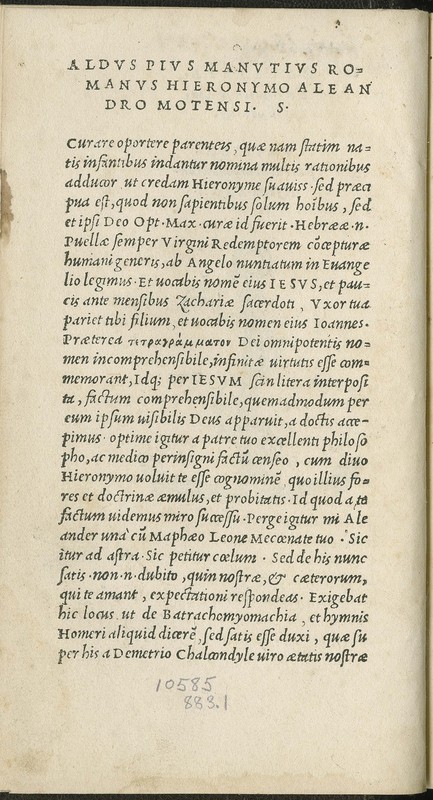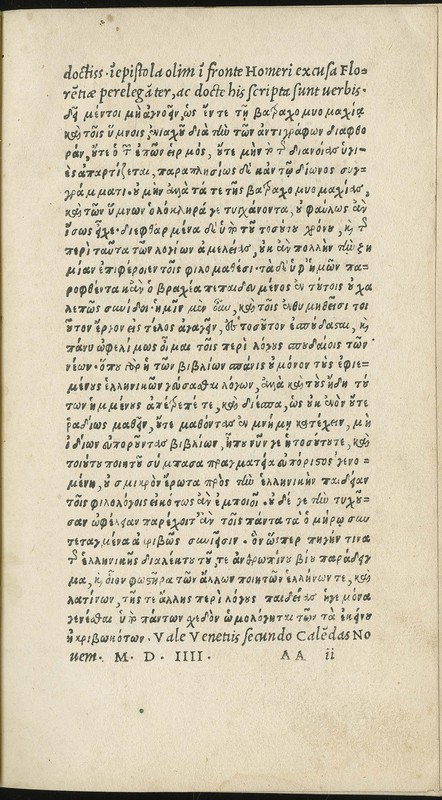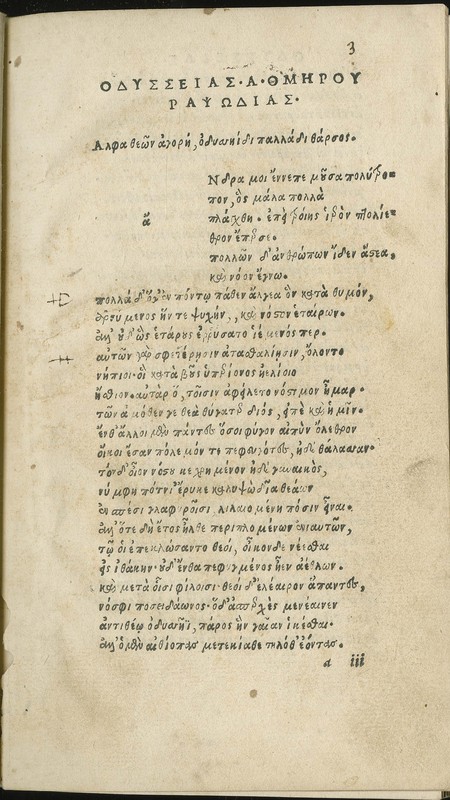Translating Homer into Print
One of the aims of the early humanists was to produce Latin translations of important Greek authors. However, there were serious obstacles for this task. In the first half of the fifteenth century, the number of Greek teachers and copyists was relatively small, and Greek manuscripts were difficult to obtain. It is indeed true that an increassing number of Greek scholars had been appointed to teach in Italy. For instance, in 1397 Manuel Chrysoloras taught in Florence for three years, and Demetrius Chalcondylas , who arrived to Italy in 1447, spent more than two decades teaching in several Italian cities, including Perugia, Padua, and Florence. But it was only after the capture of Constantinople by the Ottoman Turks that a massive wave of Greek refugees came to Italy. Many of them were the scribes, editors, and printers who made possible the first printed editions of the masterpieces of Greek literature and science.
The text that was first printed entirely in Greek was the pseudo-Homeric Battle of the Frogs and Mice (Batrachomyomachia in Latin) published by Thomas Ferrandus at Brescia in 1474. It would take some time before scholars demostrated that this satirical tale, along with the Hymns, Epigrams, and Centones, did not belong to the Homeric tradition. Also in 1474, Lorenzo Valla's Latin translation of the Iliad was printed in Rome and Brescia, and in 1488 the actual texts of the Iliad and the Odyssey were printed in Florence. This editio princeps was edited by the Byzantine scholar, Demetrios Chalcondylas, who was born in Athens, educated in Constantinople, and became first occupant of the Chair of Greek letters at the University of Padua. The printer was the Cretan Antonios Damilas. The type used was a recasting of the one that Damilas designed for Constantine Lascaris's Epitome, which had been published at Milan in 1476, and for which he had kept the matrices.
Aldus Manutius' Homer
The printer Aldus Manutius was born in the town of Bassiano, located 37 miles southeast of Rome, around 1450. He studied Latin in Rome under Gaspare da Verona and Greek in Ferrara with the son of the famous scholar Guarino Guarini. In Florence he met the humanists Poliziano and Giovanni Pico della Mirandola. When working as a tutor of the Pio family in Carpi, Aldus conceived the idea of establishing a press devoted to the printing of the Greek classics. For this enterprise he chose Venice, a vibrant commercial city where there was a large community of Greek immigrants. The first Aldine edition of the Homeric poems (1504), of which the U-M Library holds a copy of the Odyssey, set the standard for what was included in “the complete Homer”: Iliad, Odyssey, Batrachomyomachia, Hymns, and Lives attributed to Herodotus, Dione, and Plutarch. As Aldus had previously done for many other Latin and Greek writers, these two volumes were printed in a handy pocket format (octavo). In the preface of his second octavo edition of the works of Vergil, which he dedicated to Pietro Bembo, Aldus mentions that he had greatly admired the miniature manuscripts in the library of Pietro's father, Bernardo Bembo. Perhaps these manuscripts were Aldus's inspiration to print in octavo format the Latin and Greek classics.

Translating an Oral Tradition into Writing

The Latin Homer

